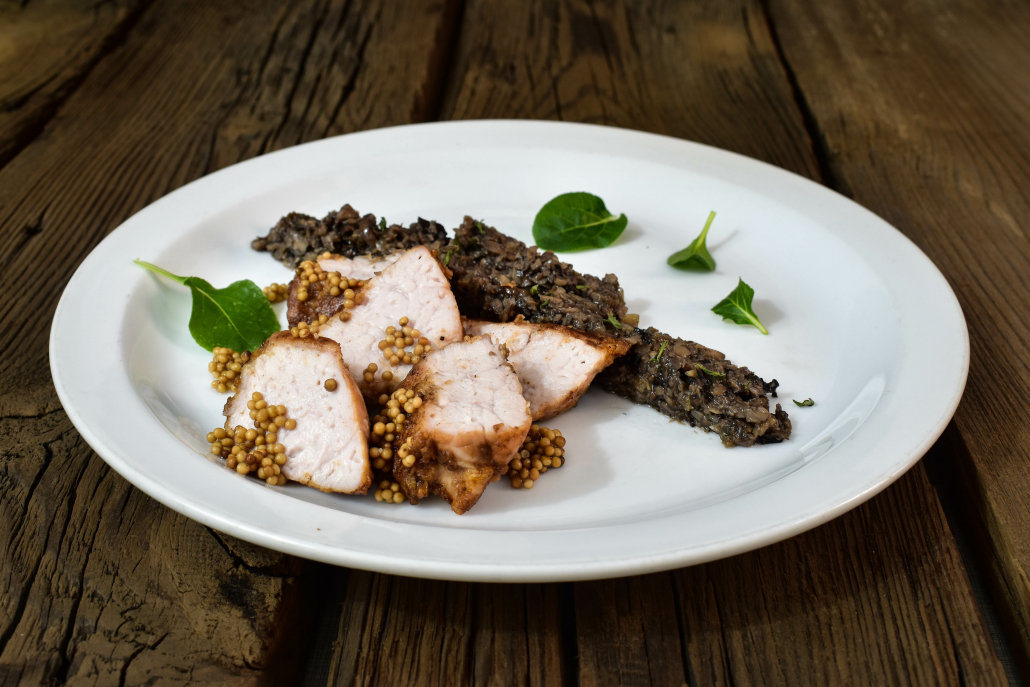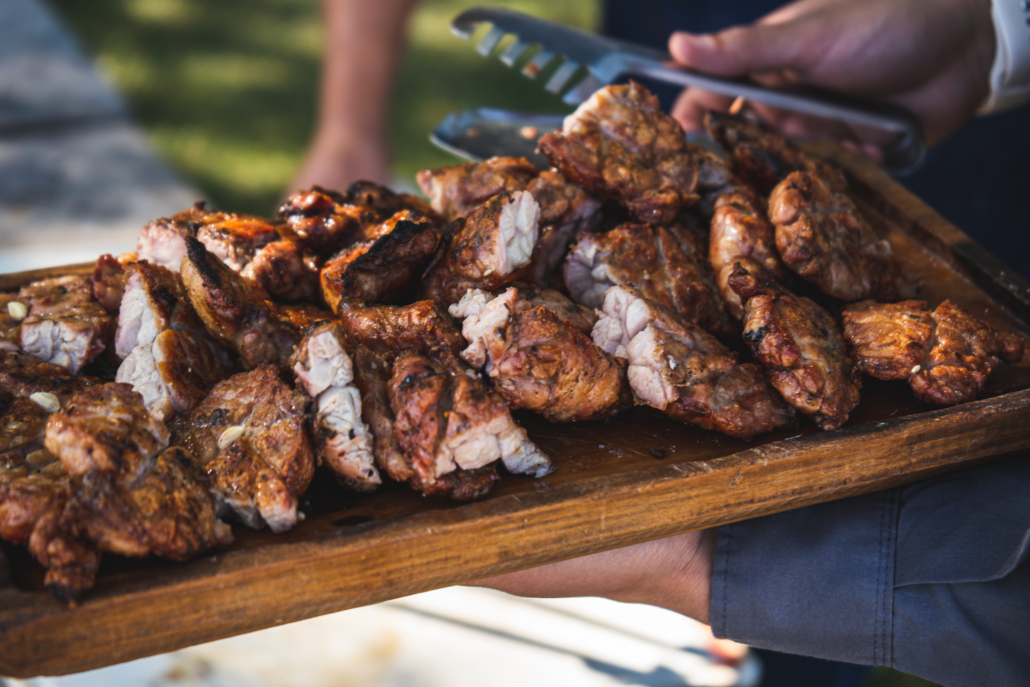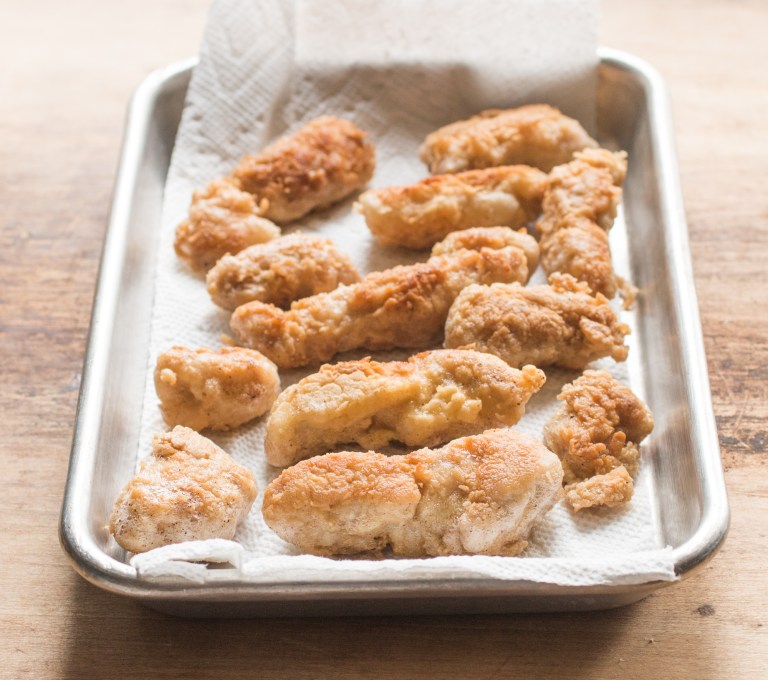We include products in articles we think are useful for our readers. If you buy products or services through links on our website, we may earn a small commission.
Sweetbreads 101: Nutrition, Benefits, and Recipes

Table of Contents
If at first mention, sweetbreads conjure images of delectable, fresh-out-of-the-oven baked treats, you’re way off…
Sweetbreads are neither sweet nor bready. In fact, they’re organ meat! The term is used for the thymus, pancreas, and sometimes parotid gland of an animal.
Keep reading to learn more about sweetbreads and why they can make a great addition to your healthy whole foods diet, whether fresh or as a beef organ supplement.
What Are Sweetbreads Made From?
Sweetbreads are the thymus and pancreas, and sometimes parotid gland of an animal, usually a ruminant animal. Common ruminants that we eat include cattle, sheep, bison, deer, and elk. Though less common, sweetbreads can also come from pork.
Sweetbreads are divided into three different categories: chest sweetbreads, throat sweetbreads, and heart sweetbreads.
The type of sweetbreads most commonly used in restaurants is from young animals, especially veal.

Why are they called sweetbreads?
The word “sweetbread” first appears during the 16th century, though its etymological origins are unclear. ‘Sweet’ is thought to come from the subtly sweet taste of the thymus gland, while ‘bread’ probably comes from brǣd, the Old English word for ‘flesh.’
What do sweetbreads taste like?
Sweetbreads aren’t especially sweet, at least not to the modern palate — but they can be delicious when properly prepared.
The taste of sweetbreads can be described as rich, creamy, or even succulent. Sweetbreads make a great addition to stews or other recipes that call for a rich broth.
In general, healthier animals will have healthier, more tender sweetbreads.
Types of Sweetbreads
Sweetbreads can come from any of five main sources:
- Veal (calves)
- Cows
- Lambs
- Deer and Elk
- Pigs
Veal
Veal sweetbread comes from the meat of a young calf. Compared to beef sweetbread, veal sweetbread has a lighter color and softer texture. Grass-fed, carefully cooked veal sweetbread is the tastiest type of sweetbread of all. In French cuisine, this type of sweetbread is known and loved as “riz de veau.”
Cow
Sweetbread from older cows isn’t as common as veal sweetbread, since it’s not quite as tender or rich.
Lamb
Lamb sweetbread is another popular type of sweetbread, second only to veal. The throat sweetbread is especially popular. You might find lamb sweetbread available at fine Italian or French restaurants; otherwise, it’s quite rare. On a French menu, they’re called riz d’agneau.
Pork sweetbread
Pork sweetbread is a rare, relatively unpopular type of sweetbread. It has a chewy, greasy flavor that makes it more of a fallback food’ than other options.
Venison and Elk
Elk and deer sweetbreads are rich and without the “organy” flavor of other animal organs if cooked well. These are usually a hunter’s delicacy, and rarely available at restaurants.
Sweetbreads Nutrition
Sweetbreads are an excellent nutritional choice. Just like other types of offal, sweetbreads are jam-packed with rare nutrients that are hard to get from muscle meat or other non-animal sources.
The nose-to-tail way of eating favored by our ancestors put a priority on sweetbreads. Modern nutritional analysis has recently confirmed that sweetbreads are rich in a wide variety of high-priority nutrients:
And here are the nutritional highlights of a 4-ounce serving of sweetbread:
| Nutrient | 110g Sweetbreads | Recommended Daily Value (RDV) | % RDV |
| Calories | 267 | 2500 | 11% |
| Protein | 14 grams | 60g (standard diet, not keto) | 26% |
| Fat | 23 grams | 30g (standard diet, not keto) | 77% |
| Carbohydrates | 0 grams | 120g (standard diet, not keto) | 0% |
| Magnesium | 17mg | 420mg | 4% |
| Vitamin C | 58mg | 90mg | 64% |
| Iron | 2.6mg | 20mg | 13% |
| Cobalamin | 0.2mcg | 1.8mcg | 13% |
| Vitamin B6 | 0.2mg | 2mg | 10% |
| Potassium | 440mg | 4000mg | 11% |
Of all the nutritional benefits of sweetbreads, their vitamin C content probably stands out the most. Very few other animal products are this rich in vitamin C. Sweetbreads are also an unusually good source of potassium, which plays a vital role in regulating blood pressure and enabling muscle contraction.
Consider sweetbreads your best friend if you’re on a 100% carnivore diet — these nutrients are pretty hard to find otherwise.

Benefits of Sweetbreads
Let’s now take a look at the nutritional benefits of sweetbreads one by one.
- High in protein
- High in vitamin C
- Rich in B vitamins
- Packed with peptides
- Loaded with minerals
High in Protein
A small, 4-ounce serving of sweetbreads contains more than 12 grams of protein. Like other animal products, sweetbreads contain all 9 essential amino acids in an easily assimilated form. Protein is highly satiating and promotes better body composition. If you’re on a low or zero-carb diet, protein is also necessary for the synthesis of glucose needed to fuel a portion of your brain cells and muscle tissue.
High in Vitamin C
Sweetbreads are an incredible source of vitamin C. They may not be as rich in energizing B vitamins as some organ meats, but they excell with their antioxidant content.
In fact, sweetbreads have as much vitamin C as many citrus fruits like clementines. Research shows that vitamin C has anti-stress, anti-aging, and pro-immunity properties. Considering that humans can’t make vitamin C themselves, it’s important to get it from your diet.
Rich in B vitamins
Sweetbreads contain a variety of B vitamins. They’re highest in vitamin B12, which is needed for functions as diverse as the formation of blood cells and cellular energy generation. B12’s pro-metabolic properties are so strong that it can even assist with weight loss.
Packed with peptides
Thymus sweetbreads are rich in several immune-boosting peptides, including thymic humoral factor and thymosin alpha-1. These peptides may support your own thymus gland, which research has shown would otherwise disappear with age. Sweetbreads are great for maintaining a healthy immune system in the long run.
Abundant Minerals
Like other organ meats, sweetbreads are an excellent source of many essential minerals. They’re rich in phosphorus, selenium, potassium, zinc, iron, and more.
Phosphorus and selenium content is especially high: 39% and 25%, respectively. Phosphorus works to strengthen bones (just make sure it’s balanced with calcium), while selenium boosts the thyroid and bolsters your immune system.
Risks of Sweetbreads?
Sweetbreads are high enough in purines and cholesterol that they may be of concern for certain groups.
For healthy people, and in the proper context of a low-carb diet, it is likely that purines and cholesterol do not pose health risks.Both substances are physiological building blocks that play important roles in maintaining physiological health.
Purines are naturally occurring substances that can be found in everything from meat to coffee and make up your RNA and DNA. Even a high-protein, high purine diet shouldn’t cause gout if carbohydrate intake is kept low.
Cholesterol provides much-needed structure to your cells. It’s also the precursor, or building block, for “youth-associated” hormones like testosterone and progesterone.
People with hypercholesterolemia may want to consult their physician before eating high cholesterol foods.
How to Fit Sweetbreads into Your Diet
Fitting sweetbreads into your diet is simple: just find one or two sweetbread-based recipes you like and make them each week.
As always, though, quality matters. Try to get your sweetbreads from grass-fed cows. If you have a thriving farmer’s market near you, ask around and see if any of the cattle farmers sell them, or could source them for you.
How to prep sweetbreads
The first step on the path to sweetbreads mastery is preparation.
And the first step of preparation is soaking. Soak your sweetbreads in cold milk or water for 4-24 hours — the longer the better.
Next, simmer your sweetbreads until they’re just barely cooked through (you can also put them in a pressure cooker). Throw them in an ice bath to cool, then cut off any gristles or membranes using a sharp knife.
Crispy Sweetbreads
This simple recipe is almost as tasty as fried chicken — and way healthier.

Image from Forager Chef
Ingredients:
- Sweetbreads
- 5 tbsp suet or ghee
- ¼ cup coconut flour
- 1 tbsp of lemon juice or red wine vinegar
- Sea salt/Himalayan salt
Instructions:
- Bring a large pot of water to a boil
- Lower heat, then mix in lemon juice and salt
- Add your sweetbreads to the boiling water, then cook for 10 minutes
- Remove sweetbreads from water, then run them under cold water until cool
- Dry the sweetbreads with a clean clothe and transfer them to a new plate
- Place another new plate on top of your sweetbreads and weigh them down with some cans or forzen packages
- Cut flattened sweetbreads into small slices about half an inch wide
- Place slices into a bowl of coconut flour, rubbing the flour in
- Heat your suet or ghee in a large skillet
- Add your sweetbreads to the pan and fry until golden brown (this should take under 5 minutes)
- Flip sweetbreads over and fry until they’re golden brown on the other side, too (this should take under 3 minutes)
- Transfer sweetbreads to yet another new plate, let cool, and enjoy!
The above recipe isn’t set in stone, so feel free to use it as a template upon which you can build with other flavors and food combinations. Sweetbreads tend to taste best in vinegar, citrus, or wine-based sauces.
To add some extra fat for a keto version, dip them in a cream-based ranch dressing.
The Bottom Line on Sweetbreads
After being neglected for decades, sweetbreads are making a much-deserved comeback as part of a nose-to-tail lifestyle.
They’re surprisingly tasty and incredibly rich in nutrients–especially C, which is very hard to come by for carnivore dieters:
- High in protein
- High in vitamin C
- Rich in B vitamins
- Packed with peptides
- Loaded with minerals
Plus, when prepared right, sweetbreads are simply delicious!














